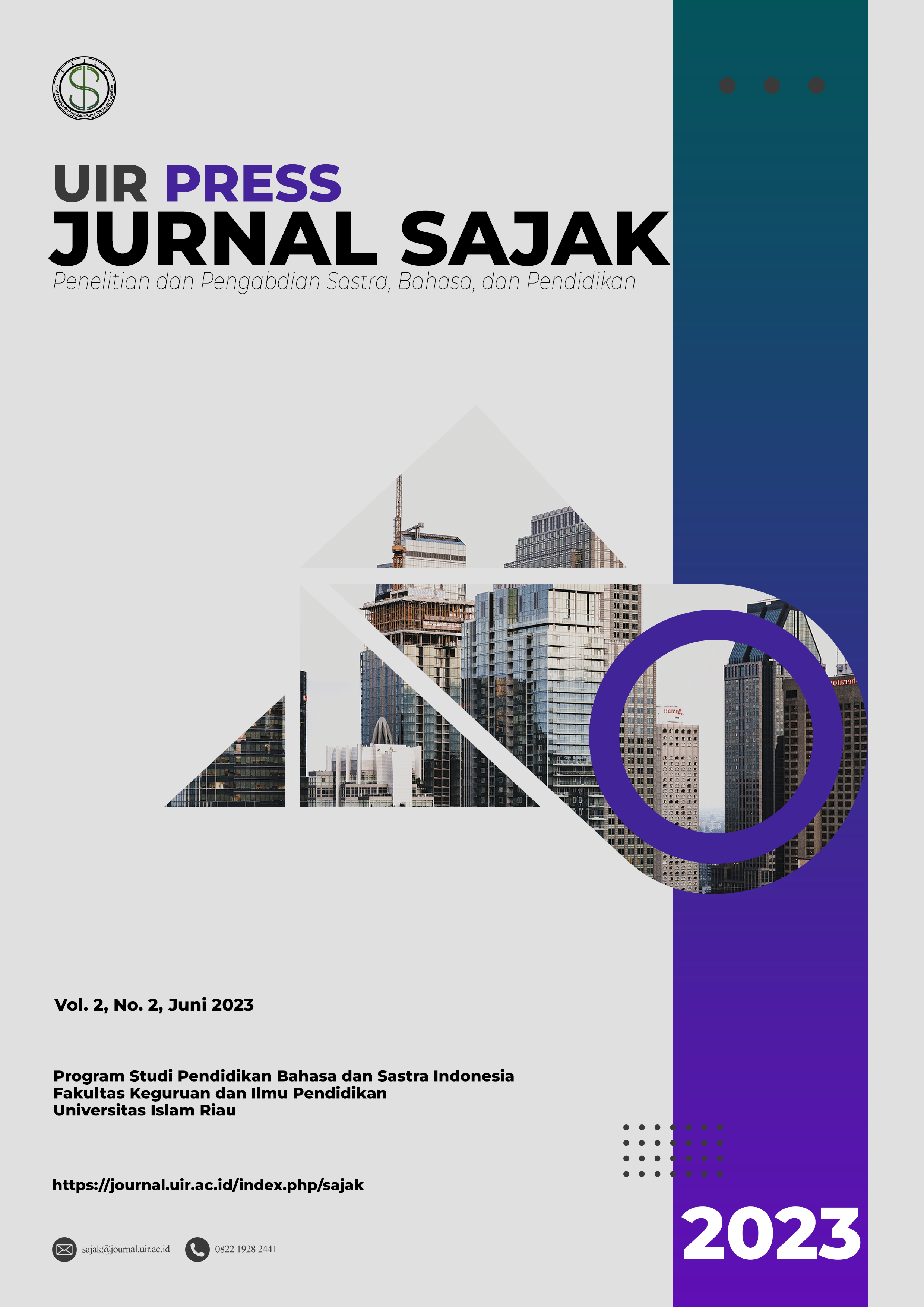Studi Kapasitas Leksikon Mental pada Subjek Berjenis Kelamin Laki-Laki dan Perempuan Melalui Alat Uji Asosiasi Kata: Suatu Kajian Psikolinguistik
DOI:
https://doi.org/10.25299/s.v2i2.11813Keywords:
mental lexicon, word association test tool, psycholinguisticsAbstract
The human brain's repository for all vocabulary and its representations is called the mental lexicon. The meaning and conceptualization of an individual or group are what connect brain words to one another. Men's and women's mental lexicons will be examined in this study to determine whether there are differences or similarities. A word association test tool was used by the researchers to support this study. This study used a word association test to examine the mental lexicons of male and female subjects from the two age categories. Descriptive qualitative research is used in this study. On the basis of the data analysis that has been described, it was determined that male and female subjects' mental lexicon capacities were significantly different. Female participants have a significantly higher mental lexicon capacity than male participants. Female participants exhibit decreased performance in the context of individual issues that have a negative emotional impact, whereas male participants exhibit an upward performance curve in each interview session without exhibiting emotional changes. This supports Tyng, Amin, Saad, & Malik's (2017) theory that emotions have a significant impact on thought processes, particularly those related to perception, attention, learning, memory, logic, and problem-solving.
Downloads
References
Daud, N., & Abd Ghani, F. (2020). ‘I Care, You Deserve’ Module in helping pedophilia victims. Journal of Counseling and Educational Technology, 3(2), 80. https://doi.org/10.32698/01231
Mardhiah, A., Sastra, G., & Usman, F. (2022). Kajian Leksikon Mental Subjek Tunggal Laki-Laki Dan Perempuan Melalui Asosiasi Kata. SeBaSa, 5(1), 45–57. https://doi.org/10.29408/sbs.v5i1.5498
Munir.A, 2015. (2015). (Studi Eksperimen terhadap siswa Sekolah Dasar di Kabupaten Gowa).
Narrog, H. (2012). A Diachronic Dimension in Maps of Case Functions. Linguistic Discovery, 8(1), 1–24. https://doi.org/10.1349/ps1.1537-0852.a.352
Pangesti, F. (2019). Senyapan Dan Kilir Lidah Berdampingan Dalam Produksi Ujaran. Hasta Wiyata, 2(1), 8–17. https://doi.org/10.21776/ub.hastawiyata.2018.002.01.02
Rosselli, M., Ardila, A., Matute, E., & Vélez-Uribe, I. (2014). Language Development across the Life Span: A Neuropsychological/Neuroimaging Perspective. Neuroscience Journal, 2014, 1–21. https://doi.org/10.1155/2014/585237
Tyng, C. M., Amin, H. U., Saad, M. N. M., & Malik, A. S. (2017). The influences of emotion on learning and memory. Frontiers in Psychology, 8(AUG). https://doi.org/10.3389/fpsyg.2017.01454
Widyantara, V. (2020). Konsep, Penggunaan, Perbandingan, Kelebihan Dan Kekurangan Serta Implikasi Google Classroom Sebagai Media Pembelajaran Jarak Jauh. Jurnal Pendidikan Vokasi Konstruksi Bangunan, May, 1–5. https://www.researchgate.net/publication/341232720





























